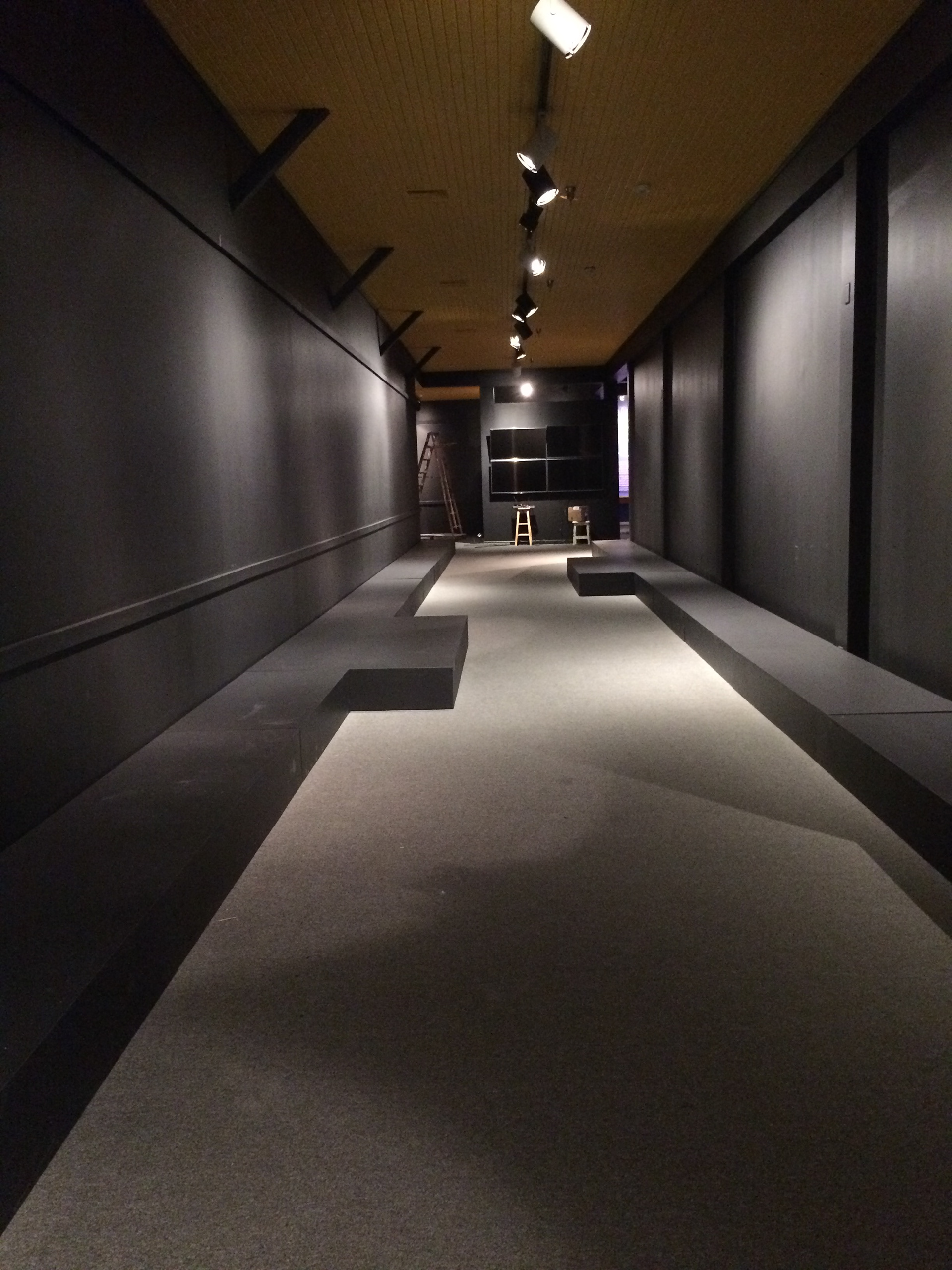
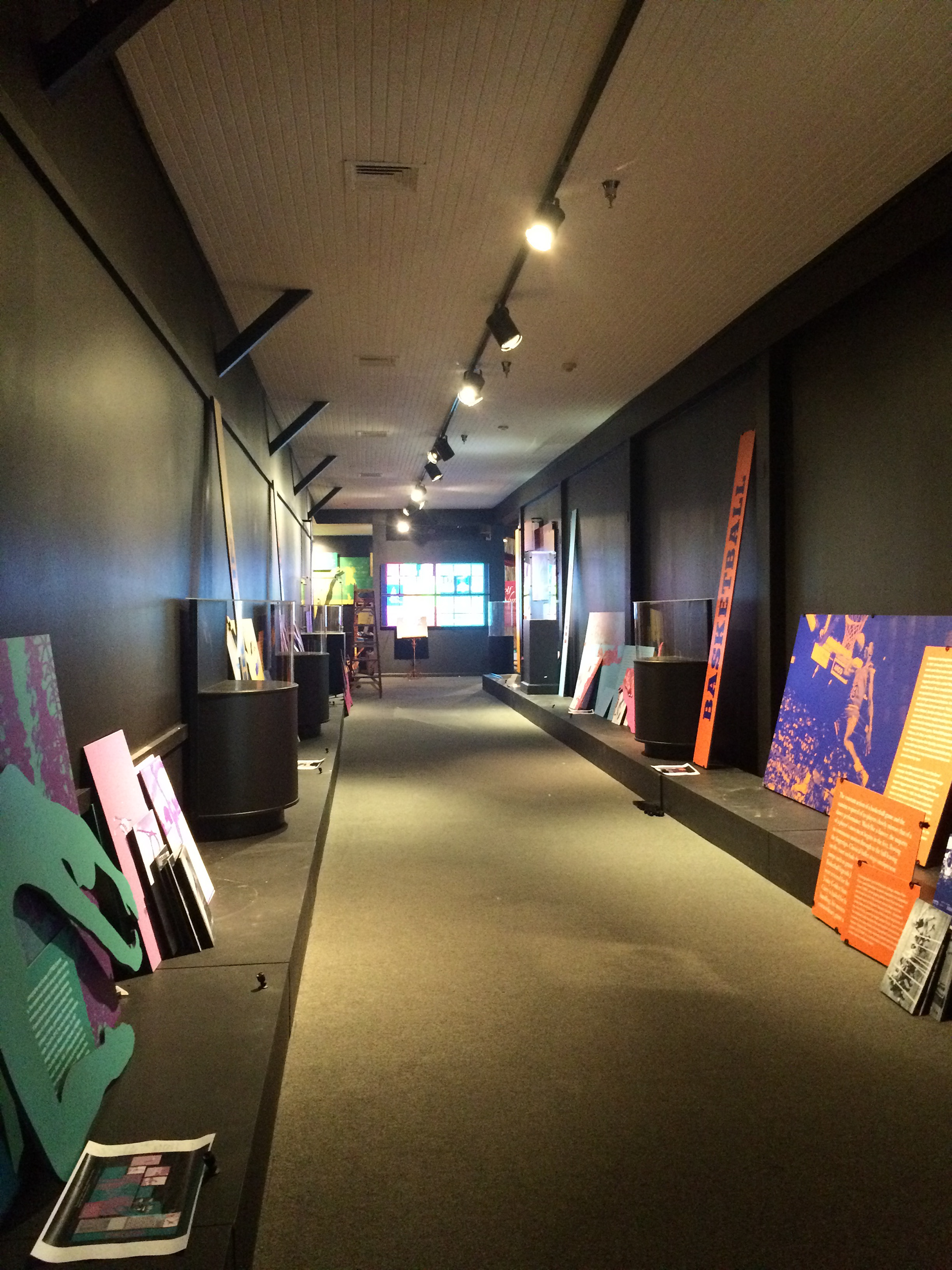


Above: Views of the exhibition space as we prepared for the installation.
Ten different sports were featured as well as four key figures whose fame bridged both dance and sport. Each section focused on three common ideas: shared movements of that sport, key dancers or athletes related to the sport, and choreography inspired by the sport.
Several versions of the logo were created using silhouetted dancers and athletes. A heavy, collegiate-style font ChunkFive combined with the more whimsical Lavanderia completed the look. The entrance to the exhibition offered a motion-sensitive interactive display, rotating the various silhouettes paired with the logo-type.
While examining various color schemes, I was inspired by the popular duotones featured on the music platform Spotify. Experimentations with color combinations generated a unique palate for each section/sport. Due to time constraints and the size of the gallery, I decided not to repaint the matte black walls. This ended up creating a dramatic contrast to the vibrant colors in the duotones. Narrow risers with built-in lighting were used as support for some of the larger panels and were helpful barriers indicating appropriate viewer distance.
Each section featured an oversized, some as large as 4 foot x 8 foot, eye-catching duotone action shot of the sport in the background. A color-coordinated silhouette of a dancer with similar movement floated in the foreground. Additional photos and text were displayed using varying sized stand-offs, providing dimension and the ability to overlap panels of text over photos.
Experimenting with unique ways to display video and text on the same panel, I incorporated floating plexiglass panels. Each panel had a special film adhered which enabled video projection from short-throw projectors, painted black and disguised in the background. Since there was a great deal of information to convey, the plexi panels offered an additional level of dimension, that was transparent, allowing the images form the background to still be visible.
Mimicking traditional presentations of sports apparel, such as football or baseball jerseys, I chose to display the garments flat against the walls, with plexiglass panels or cases over them for protection. A plethora of sports memorabilia filled the display cases that were scattered throughout the exhibition.
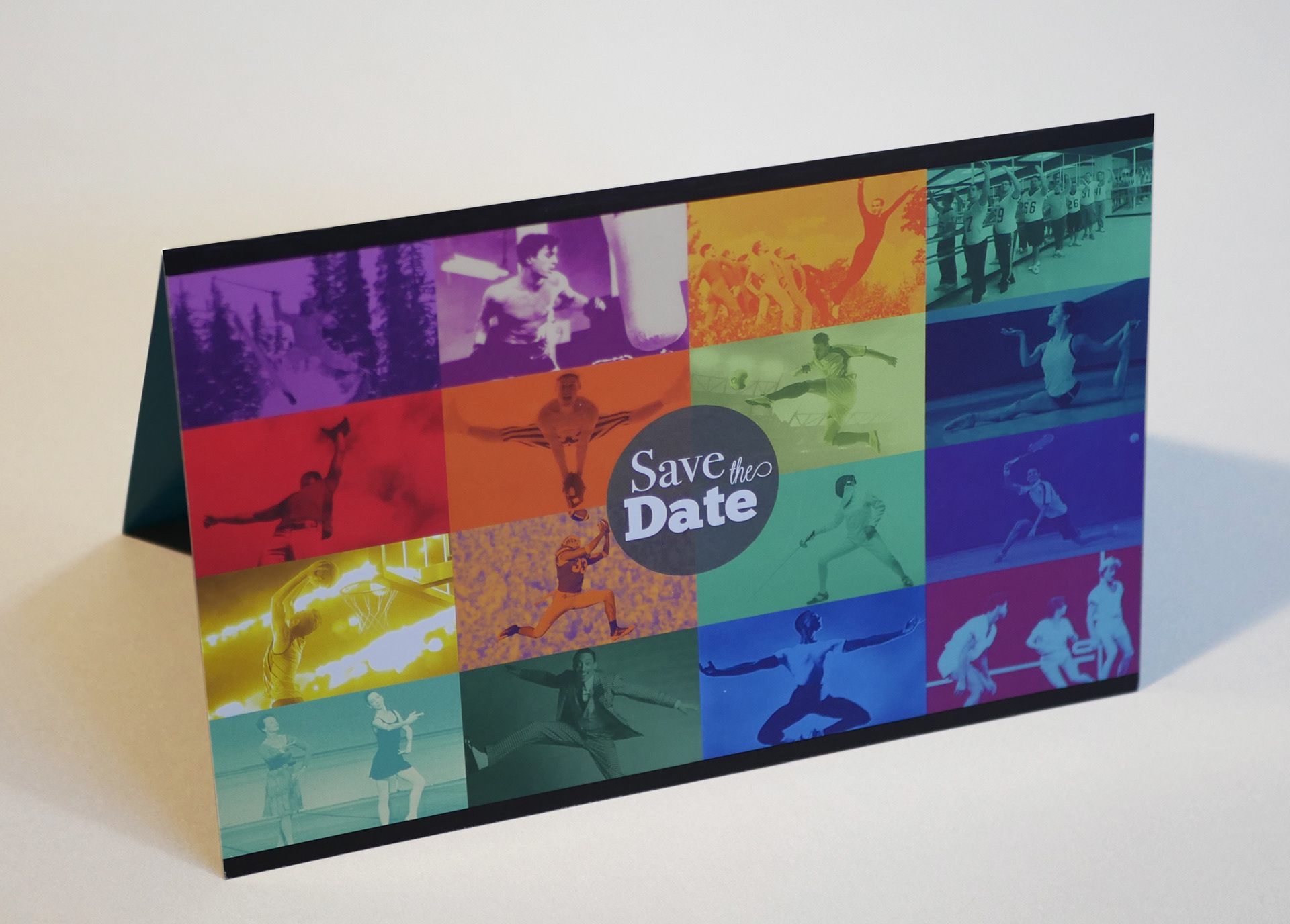
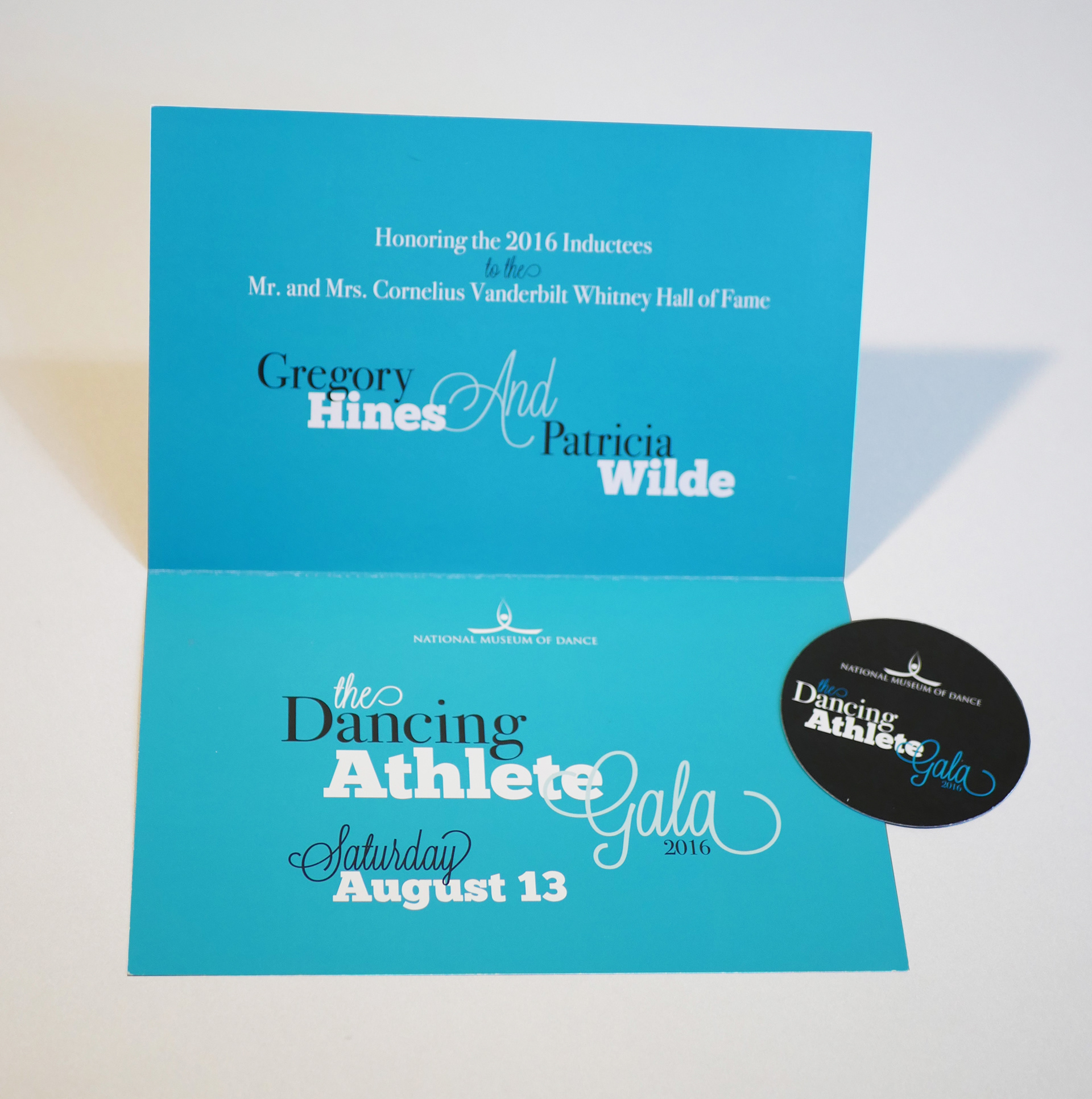
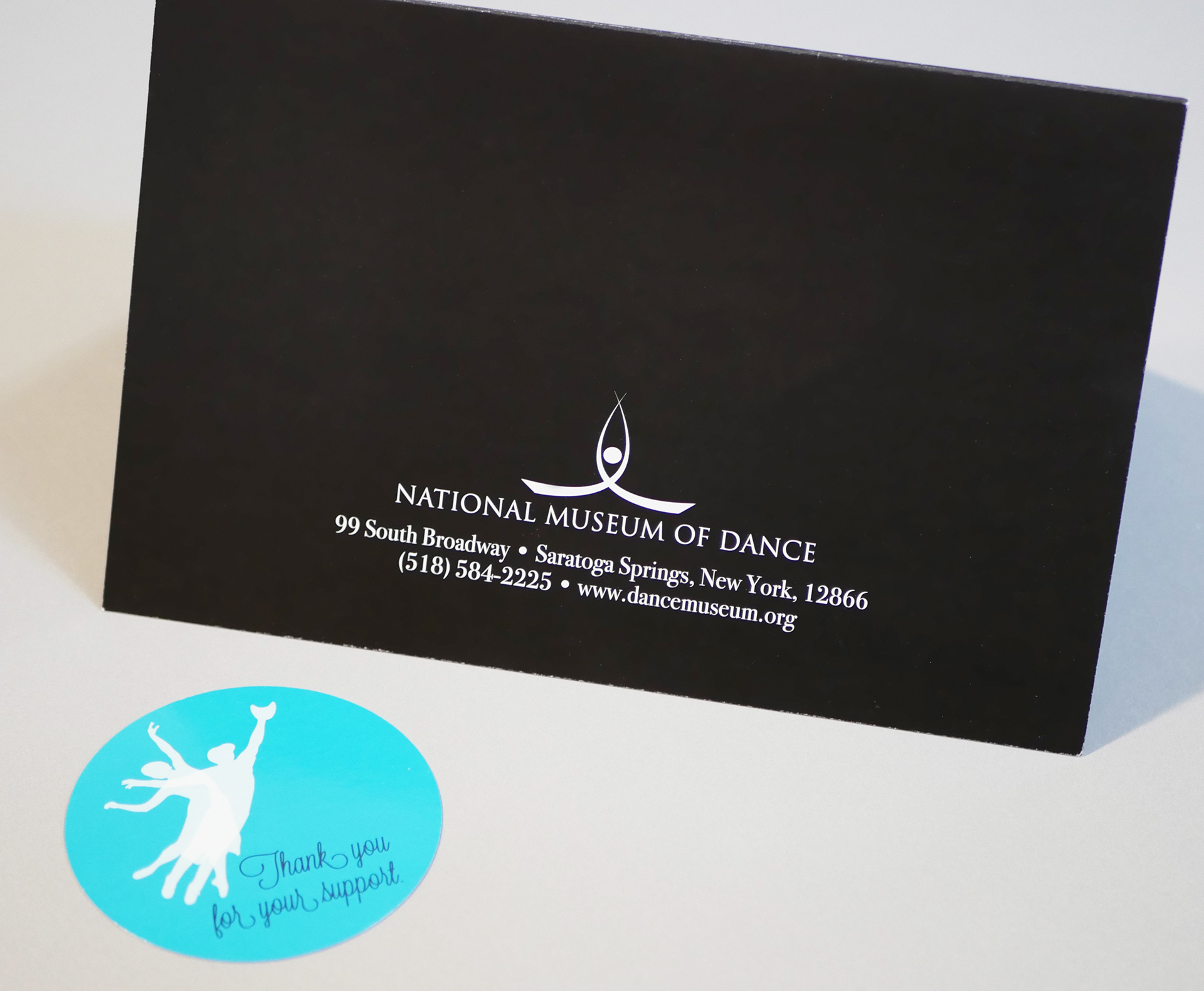
The community interest in The Dancing Athletewas tremendous! The addition of sports into the National Museum of Dance brought an entirely new audience as well as new avenues for programming.
Several promotional pieces for the Museum were created, like this invitation to the annual Gala, which featured the colorful duotones from The Dancing Athlete exhibition as the centerpiece
Lisa Miller, Studio di Luce photos